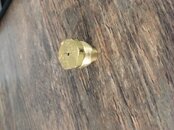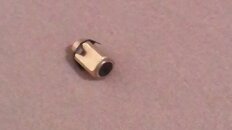rolanddiver
Registered
Good Morning/Afternoon,
We have 3 O-two adjustable medical oxygen regulators that we use on our Nitrox blending sticks for flow control. 2 out of the 3 no longer work as the seat material has worn out and it leaks. I wanted to purchase the parts from the mfg, but they wouldn't sell direct and there are no service centers in Europe. I figured that I can machine a piece of plastic and just replace it but no luck. So far I tried polyamide (way too hard) PTFE (aka Teflon) and polyethylene but it still leaks slowly but surely. Do any of you know what would be the best plastic to use for such seat inside a pressure regulator? The original plastic in the seat was so soft, that I could easily scrape it out with a dental pick. Below is the picture of the part(s) in question. Your help is greatly appreciated.
Very Respectfully
Roland
We have 3 O-two adjustable medical oxygen regulators that we use on our Nitrox blending sticks for flow control. 2 out of the 3 no longer work as the seat material has worn out and it leaks. I wanted to purchase the parts from the mfg, but they wouldn't sell direct and there are no service centers in Europe. I figured that I can machine a piece of plastic and just replace it but no luck. So far I tried polyamide (way too hard) PTFE (aka Teflon) and polyethylene but it still leaks slowly but surely. Do any of you know what would be the best plastic to use for such seat inside a pressure regulator? The original plastic in the seat was so soft, that I could easily scrape it out with a dental pick. Below is the picture of the part(s) in question. Your help is greatly appreciated.
Very Respectfully
Roland





